8 things making your living room lighting look cheap – and what designers do to remedy the problems
Discover 8 reasons why your living room lighting is letting down your house – and how to avoid it

With their delicate interplay between form and function, all living rooms benefit from a well-executed decorative living scheme. Good lighting can make a small space seem larger, or a vast room more intimate, help create mood, enhance features and define zones. Such is its versatility, that it is worth planning the lighting at the beginning of a project.
There is so much to consider when finding the right living room lighting ideas, and it is, therefore, so easy to make certain living room lighting mistakes. Start by thinking about how the room is to be used. Generally, a scheme should include a mix of task lighting, such as reading lights and under cabinet lights, plus general background lighting and accent lighting.
There are many affordable ways you can make a home look expensive – and your lighting scheme is a great place to start. Below we share what makes living room lighting look cheap, and expert advice on how to avoid it.
1. The wrong light temperature
The first rule when planning living room lighting is to use a consistent lighting temperature in fittings, says Irene Gunter of Gunter & Co. ‘We use warm white bulbs where we can.’ The wrong color lighting could turn your scheme cold, and make you look gray!
Another favorite tool is thinking of how the lining of lampshades can impact the overall light temperature, as well as add a playful spin on your existing decor – not only can you use metallic card linings, but you can also use patterned or colored fabrics.
‘Don’t forget that it will impact the color of the light it creates,’ adds Irene. ‘For instance, a green lining will provide a green light – not the greatest look!’
2. Using the main ceiling fixture to 'flood' a space with light
Most living rooms, big or small, need more than one general light fixture.
‘Some people feel the need to flood small spaces with ceiling lights to make them feel brighter and therefore larger,' says Claire Sa, director, of De Rosee Sa. 'However, I think atmosphere and dimension can be added to small living rooms with different levels of controlled lighting.'
'The lowest level might be lamps on side tables; the next would be lamps on a desk, console, or chest. Finally, add fewer rather than more directional ceiling lights, positioned closer to the walls and angled away from the center of the room to create a feature glow on, for example, a piece of wall art.’
3. Poor positioning and placement
Where you position living lighting is of the utmost importance. Consider how the light changes throughout the day when thinking about where to position lights to create the most impact.
To curate the best possible light scheme, you'll want to invest in flexible light sources for different situations: a floor light with a swivel arm is ideal as an evening reading lamp behind a sofa or chair, says Hollie Moreland, creative director of David Hunt Lighting.
Remember that shade colors can affect the mood of a room, so for added ambiance, choose darker tones that will feel moodier and cozier.
4. Not layering lighting
Start with the overhead lighting when designing a living room: pendants or chandeliers are a beautiful way to ‘crown’ the lighting, says Lucy Barlow, creative director of Barlow & Barlow.
‘Then look at art – picture lights are a great way to add the second layer. The next are decorative wall lights installed at head height as an eye-level light source.’
High-value (be it in real terms or personal) art needs to be treated with careful consideration when it comes to lighting – especially if the aim is to make it a standout feature of the room. ‘Lighting a picture has the double advantage of showing off the work and reflecting light back into the room,’ says interior decorator Nicola Harding, who designed this scheme.
Finally, table lamps will light the lower section of the room. If you’re able to do this you might not need a single downlighter which, in more traditional schemes, is a huge advantage.
Adding an element of vintage charm to your space, the Bronwyn Table Lamp features a classic yet playful beige gingham pleated shade over a satin matte glazed ceramic base. When it comes to decorating with patterns and prints, gingham is one of the most classic of all.
Light blue is the color of 2025, so decorate with this popular decorative choice to illuminate your walls. With a milk glass shade and oiled brass hardware, this vintage-inspired sconce brings feminine charm to any space.
Using texture in interior design is a wonderful way to add depth and dimension to a living space. The Terrene pendant brings the textural character of Miami-based artist Élan Byrd's natural fiber artwork to a statement woven lighting design.
5. Your pendant is hung too high
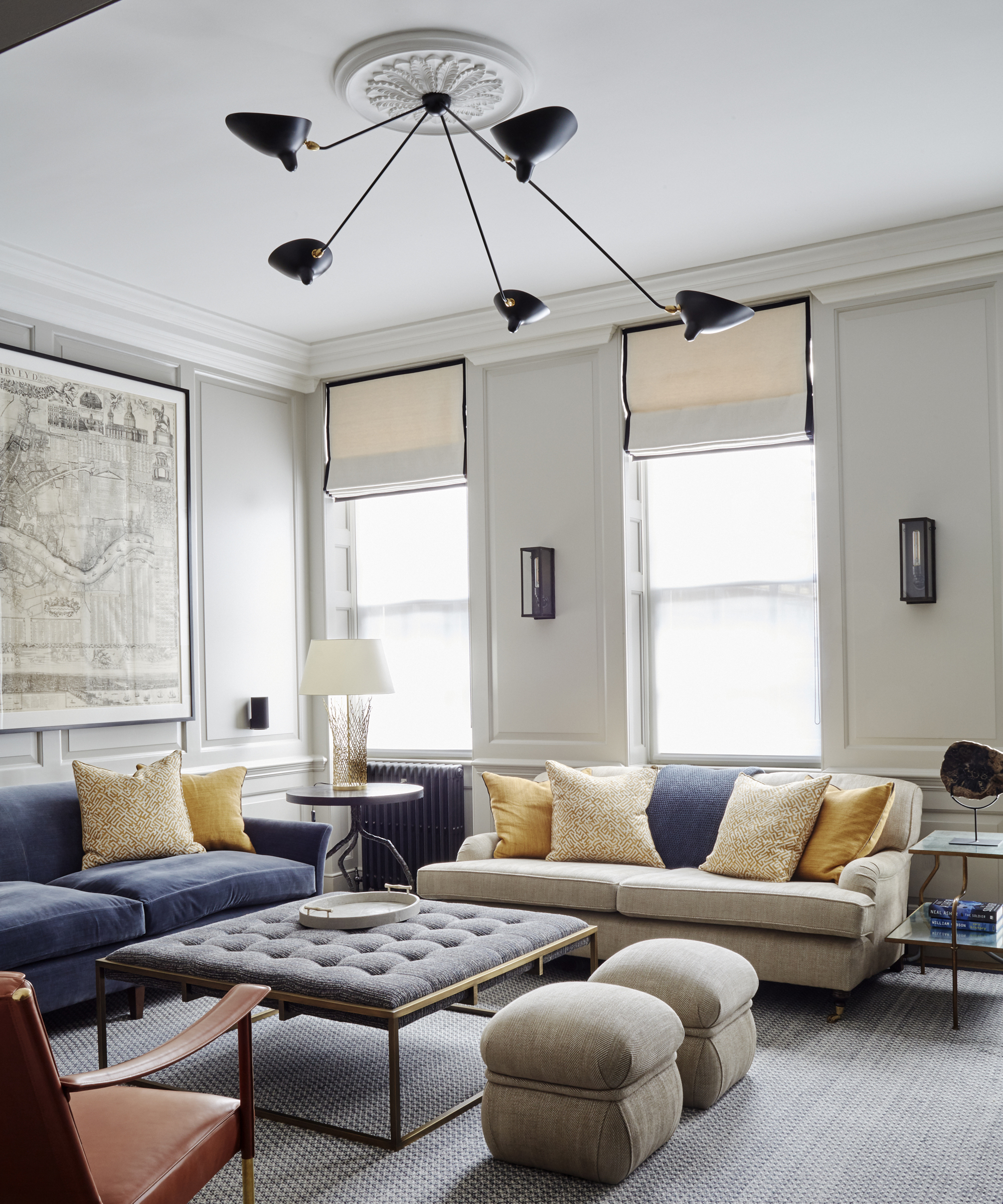
For any hanging light, the total drop available is a great starting point, says designer Chris Cox of Cox London. Ensure the design has space to breathe and can be hung reasonably low so that it relates to the furniture in a room and those using it.
‘In the 25 years I’ve been hanging chandeliers, people tend to plan a pendant too high and, in reality, it looks and feels a little better lower.’ You can always hang a pendant lower over a coffee or center table as long as it doesn’t detract from an important view or artwork.'
6. Relying solely on modern recessed lighting
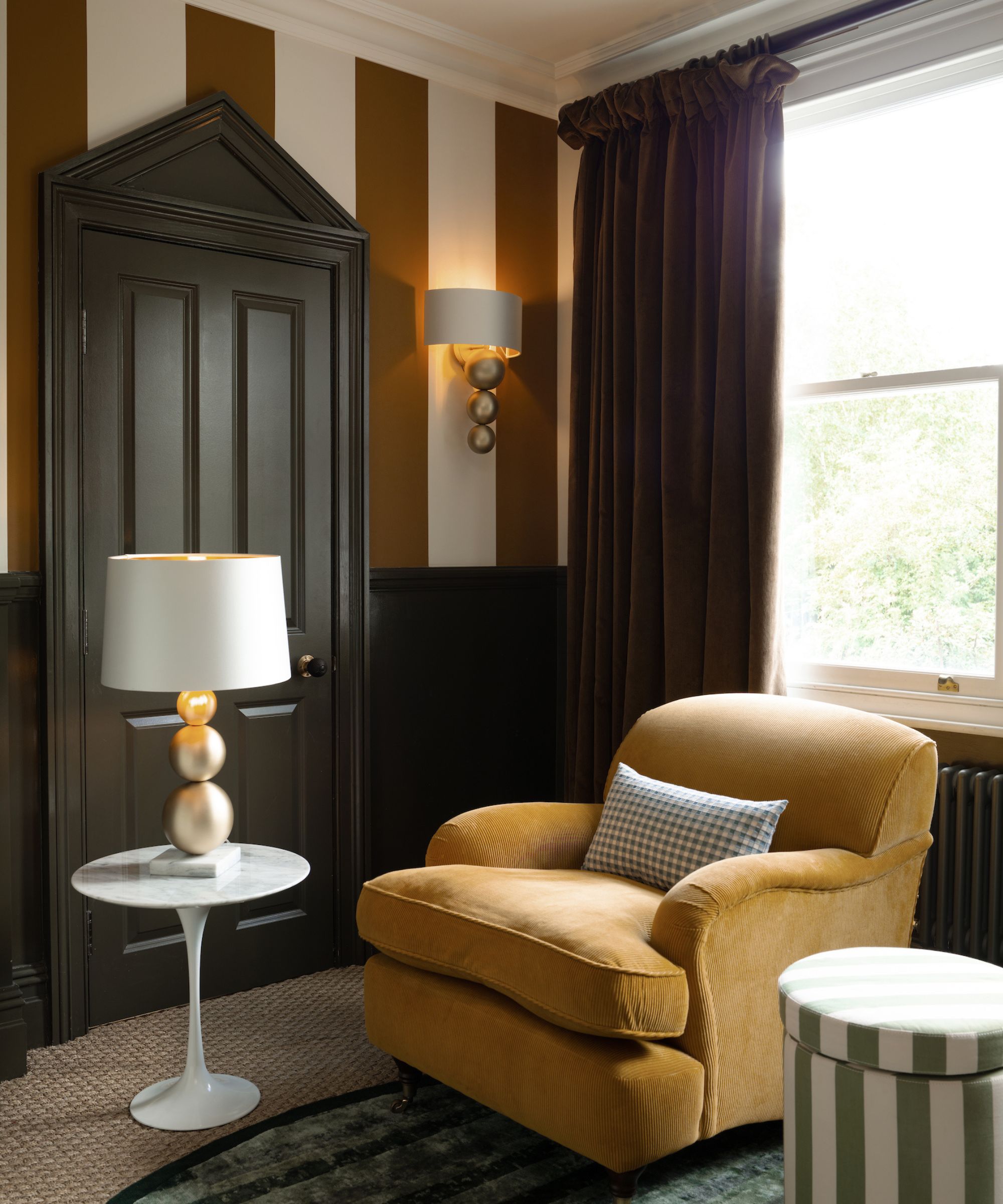
I am not a fan of recessed lighting in a living room. It is cold and clinical, and the recessed fixtures look a little too modern for my taste. While they provide brightness, have a contemporary look, and are often dimmable, the light shines downward, casting an unflattering, unmovable glow. This might work in a bathroom, but a living room should have an ambiance. The lighting should be flexible.
Replace one of the recessed lights with a pendant or chandelier with upward-facing bulbs or shades. This will create softness and is an opportunity to add another design element to the space.
7. The fixtures are not on dimmers
Lights with dimmers are a non-negotiable for me when planning a lighting scheme. Without dimmers, you’re stuck with one level of brightness, which can often be way too harsh on the naked eye.
Using lighting controls so that each effect can be individually controlled is the key to setting the mood. ‘At a minimum, add dimmer switches so you can manipulate the light levels,’ says Sally Storey, creative director of John Cullen Lighting.
She also recommends having sockets set into the floor at the center of the room by sofas to avoid having trailing wires. ‘If you have a small alcove, adding two slim wall lights on either side can create an intimate place to sit and relax and read.’
8. Unsightly wiring is on show

No one wants to see trailing wires that can ruin the overall look and feel of your luxury living room.
When commissioning bespoke joinery, ask the carpenter to make allowances for internal wiring from the start. This will allow for some lights to be built into the unit, removing the need for trailing wires from standalone lamps or wall lights, resulting in a cleaner finish. Interior decorator Sarah Brown commissioned this pretty bespoke shelving painted in a pale pink gloss and with tongue and groove detailing for a sitting room in London.
‘An interesting room is made up of many layers that allow the eye to travel,’ she says. Sarah added decorative flourishes to the lighting by using patterned lampshades on the sconce and the mantelpiece lamp.
Living rooms tend to be among the most sociable rooms in the home. They are used for relaxing, entertaining, watching TV, or reading, so lighting needs to be flexible.
If you don't have an expert to explain the importance of well-planned lighting ideas, it's easy to see how things unravel. Follow the advice above for a pleasing scheme that is sure to shine.
Sign up to the Homes & Gardens newsletter
Design expertise in your inbox – from inspiring decorating ideas and beautiful celebrity homes to practical gardening advice and shopping round-ups.

Jennifer is the Digital Editor at Homes & Gardens. Having worked in the interiors industry for several years in both the US and UK, spanning many publications, she now hones her digital prowess on the 'best interiors website' in the world. Multi-skilled, Jennifer has worked in PR and marketing and occasionally dabbles in the social media, commercial, and the e-commerce space. Over the years, she has written about every area of the home, from compiling houses designed by some of the best interior designers in the world to sourcing celebrity homes, reviewing appliances, and even writing a few news stories or two.
You must confirm your public display name before commenting
Please logout and then login again, you will then be prompted to enter your display name.
-
 This simple marble hack elevates my budget-friendly wooden kitchen countertops and prevents the dreaded water damage for way less than you’d think
This simple marble hack elevates my budget-friendly wooden kitchen countertops and prevents the dreaded water damage for way less than you’d thinkThis design trick looks expensive, solves a problem, and was the easiest decision I made during my kitchen reno
By Charlotte Olby Published
-
 Emily Blunt gifted Cillian Murphy this $545 pillow – she's 'obsessed' with these luxury pillows, and frankly, so are we
Emily Blunt gifted Cillian Murphy this $545 pillow – she's 'obsessed' with these luxury pillows, and frankly, so are weThe Oppenheimer stars sleep on this ultra-luxe goose down pillow – here's why we love it – plus our affordable alternatives from $35
By Sophie Edwards Published